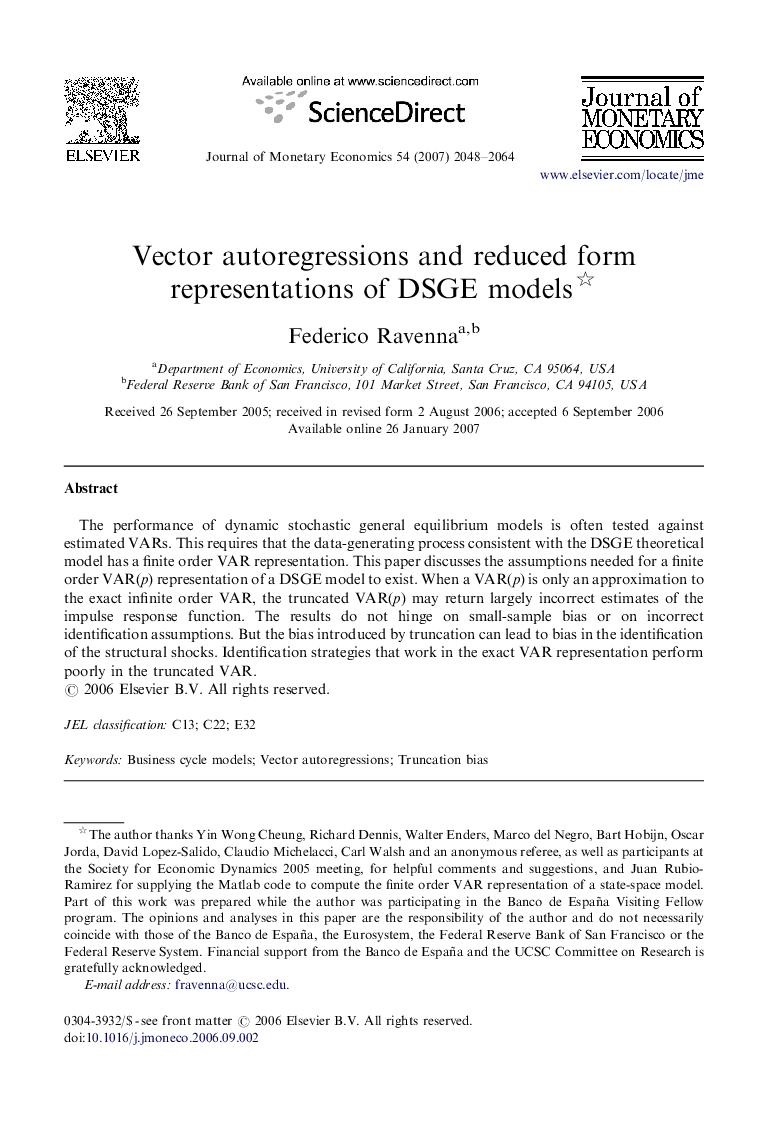| Article ID | Journal | Published Year | Pages | File Type |
|---|---|---|---|---|
| 967951 | Journal of Monetary Economics | 2007 | 17 Pages |
The performance of dynamic stochastic general equilibrium models is often tested against estimated VARs. This requires that the data-generating process consistent with the DSGE theoretical model has a finite order VAR representation. This paper discusses the assumptions needed for a finite order VAR(p) representation of a DSGE model to exist. When a VAR(p) is only an approximation to the exact infinite order VAR, the truncated VAR(p) may return largely incorrect estimates of the impulse response function. The results do not hinge on small-sample bias or on incorrect identification assumptions. But the bias introduced by truncation can lead to bias in the identification of the structural shocks. Identification strategies that work in the exact VAR representation perform poorly in the truncated VAR.
